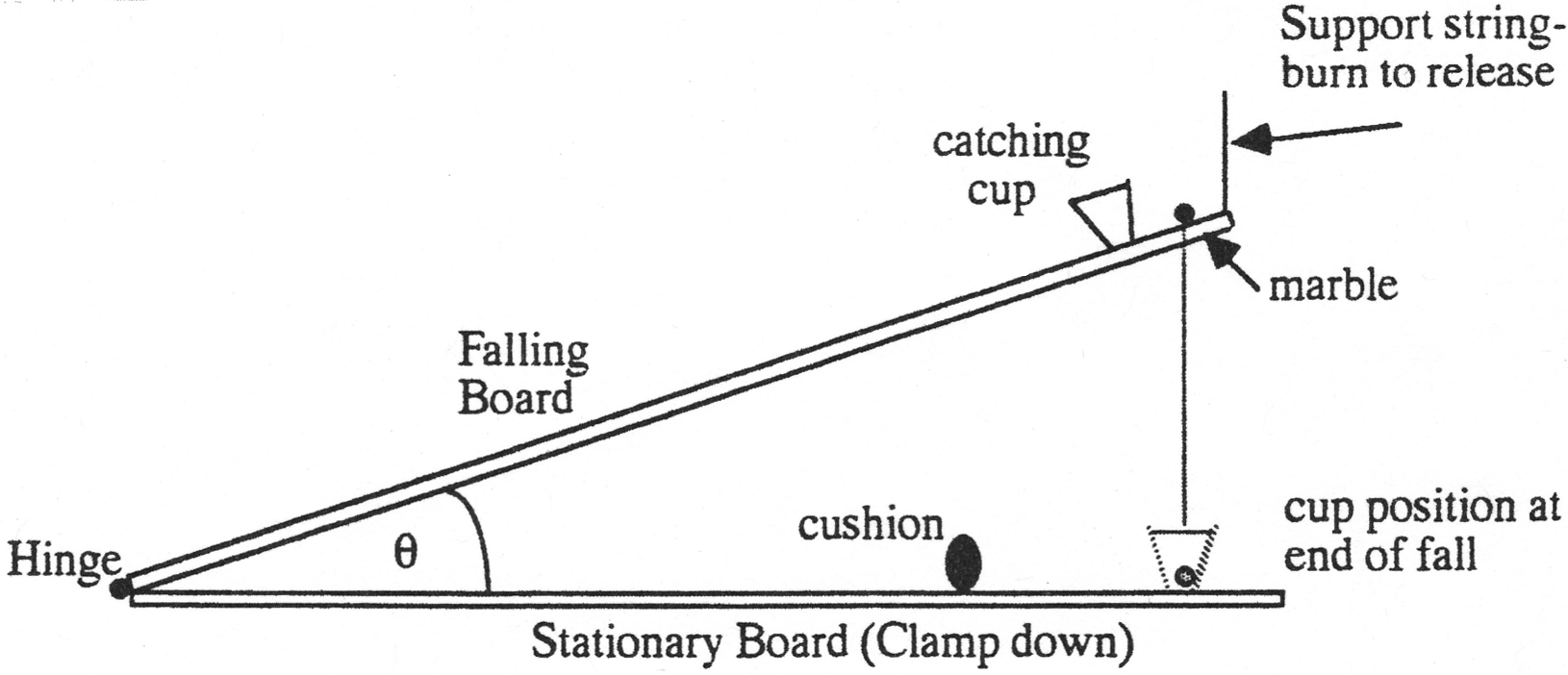Falling Faster Than ‘g’
November 01, 1988 Filed in:
Demo CornerT. Dean Gaily, University of Western Ontario
A simple lecture demonstration to illustrate that some objects do ‘fall’ with an acceleration greater than 9.8 m/s
2 is constructed from two pieces of 2.5 cm × 15 cm lumber approximately 1 m in length (1” × 6” × 39”), hinged together at one end. A small marble placed in a notch at or near the end of the “falling” board can be made to fall slower than the board and land in the cup strategically placed on the falling board.

Construction is very straightforward, but here are some tips and precautions:
- Arrange to release the falling board smoothly, using either a support thread that can be burned or an electromagnet and a piece of soft iron on the falling board. Interrupting the current to the magnet causes the board to fall smoothly.
- provide some form of sticky substance in the catching cup to prevent the marble from bouncing out when the board reaches the bottom of the fall.
- Provide a cushion for the falling board, again to keep the marble from bouncing out of the cup. you might use plasticene or ‘duxseal’ warmed and worked by hand just prior to the performance of the demo.
This demonstration has been the subject of a recent article in the American Journal of Physics [August, 1988, pg. 736]. Here is a much simplified (and less accurate) analysis of the demonstration. The falling board is a rigid body and the gravitational torque acting on the centre of mass of the board equals its moment of inertia times its angular acceleration.

Hence, the angular acceleration is

The tangential acceleration of the end of the board (approximately where the marble is placed) is obtained from the angular acceleration by

The vertical component of this tangential acceleration is then

When cos
2θ > 2/3,
av >
g and the end of the board falls with an acceleration greater than
g. Thus for angles of release of less than about 35°, the marble will be caught in the cup. You might wish to experiment with other angles of release, especially greater than 35–45°, to see if the acceleration of the board’s end is
less than that of the freely falling marble.
Column Editor: Ernie McFarland, Physics Department, University of Guelph, Guelph, Ontario, N1G 2W1 Tags: Forces, Motion



